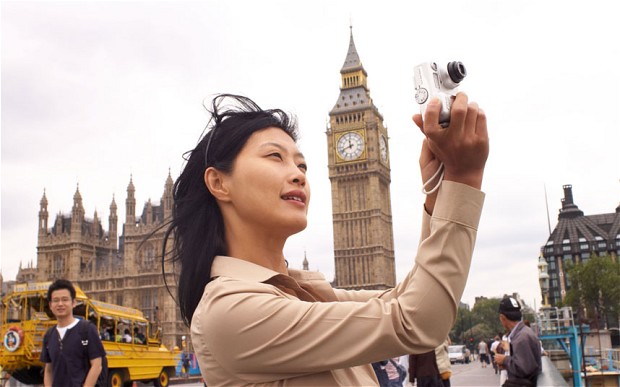 With China’s outbound tourism ready to shake global tourism trends, European nations need to reinvent strategies to reach out to young Chinese consumers, adapt their promotional activities and gain new recognition from this fast-growing market.
With China’s outbound tourism ready to shake global tourism trends, European nations need to reinvent strategies to reach out to young Chinese consumers, adapt their promotional activities and gain new recognition from this fast-growing market.
In this article Andrea Fenn of Fireworks and Gianluca Fracasso of MaxMedia look at the evolving situation that National Tourism Organisations (NTOs) and European countries need to address. They reference the emerging opportunities presented by the digital, social and mobile world in China, and highlight the primary need to embrace digital platforms that can easily reach and connect with China’s vast number of ‘luxury tourists’.
‘European tours’ go digital
In an increasingly dynamic marketplace, battles to secure the attention of Chinese tourists are now being fought on digital and post-digital grounds. These include promotional activities across a range of social media platforms, user generated content and mobile applications. Digital and new media channels play a crucial role in influencing the decision-making process of Chinese boutique travellers. Many competing European destinations now acknowledge the urgency for a more localised strategy to attract this elite group.
The importance of understanding China’s new travellers cannot be underestimated: according to Euromonitor’s industry reports, 26.8 million Chinese tourists are expected to travel abroad in 2016—up 343 per cent from 2006 data—and many of these tourists choose Europe as their top holiday destination.
Chinese travellers spend handsomely abroad and rank as top tourism spenders worldwide. The European Travel Commission calculated that the average expenditure of Chinese tourists in Europe has steadily grown over the years, reaching an average of EUR 659.71 per trip—excluding transportation―with about one third of their travel budget devoted to shopping for luxury brands. Apart from the traditional activity of ‘museums and monuments’, shopping is by far the biggest attraction for Chinese travelling to Europe: it accounts for as much as 51 per cent in Chinese tourists’ decision making, ahead of going to the beach (37 per cent), and visiting museums (22 per cent).
As a reflection of these consumer trends, it should be stressed that a significant amount of luxury product purchases by Chinese nationals are already made outside of China. The phenomenon of daigou―collecting orders for purchases when going abroad―is now extremely common. To leverage this consumption hunger, tourism agencies now often include stops in outlet centres or shopping malls on their organised tours.
The internet is the key channel for Chinese tourists picking a European destination, in the form of travel websites (50 per cent), online review sites (47 per cent) and social media (27 per cent). The impact of the internet and social media, on shopping tourism specifically, is significant in China, where the average luxury consumer is much younger than in the West and therefore more connected. Over 73 per cent of luxury consumers’ rely on the internet as their main source of information.
Europerformance
When it comes to using digital means to promote tourism in China, the US has done consistently better than Europe. Hundreds of American tourist destinations and tourism boards have a presence on Chinese social media networks like Sina Weibo and WeChat.
European tourism authorities have been much slower to acknowledge the digital opportunities, as well as the particularities, of the Chinese web; often their most pioneering activities are an official website translated into Chinese. As a result, a common complaint by tourism agencies in Shanghai is that it is hard to find online information about European destinations.
 Until now very few European tourism boards have attempted to adapt their successful, more complex, Western-focussed online campaigns for the Chinese digital media landscape. However, there are some notable examples:
Until now very few European tourism boards have attempted to adapt their successful, more complex, Western-focussed online campaigns for the Chinese digital media landscape. However, there are some notable examples:
- Visit England’s international ‘GREAT’ campaign, which found its way onto China’s social media, was a successful follow-up to the Olympic Games in 2012. Traditionally England is not the most powerful player in the ‘Eurotour’ competition, but its aggressive digital presence has converted many Chinese.
- Switzerland & Swissair’s online promotion: despite its small size, Switzerland has long been at the forefront of digital tourism campaigns in China, thanks to the joint efforts of its national air carrier.
Rapid digitalisation
An emerging trend driving the use of digital platforms within the tourism industry is the promotion of specific shopping destinations, particularly on organised group tours. Ctrip, China’s top online tourism website, is already offering Wi-Fi connection to outbound groups for the purpose of keeping tourists more connected to (mostly shopping-related) information.
Other exclusive shopping destinations, especially large malls in European capital cities, have started developing a Chinese web presence to attract tourists. The frontrunners are top department stores like Galeries Lafayette in France and Harrods in London, who have experimented with partnerships with tourist websites like Ctrip, providing special discounts to users.
Losing opportunities?
European NTOs, as well as regional destinations, need to be aware of Mandarin-friendly digital platforms, both B2B and B2C, to connect with their Chinese clientele. These would include the online spaces provided by platforms such as Ctrip and Qunar, and social networks like Sina Weibo, WeChat and Douban.
It has become mandatory to join the ‘digital conversation’ and ensure tourism destinations are accessible to Chinese end consumers. Possible approaches could include:
- Creating engaging multimedia content that is informative and relevant to the audience. Promoting the opportunity to achieve the perfect tan is not going to attract a culture that venerates a pale complexion;
- Activating on-site visits with post-digital experiences that can provide more information or entertainment to tourists, and making them available both on and offline. Mobile applications like WeChat and online-to-offline integrations like QR codes can be particularly effective in this respect;
- Using digital channels to provide incentives to Chinese tourists in the form of special discounts to shopping sites at the destination or partnerships with tourism websites; and
- Creating a digital customer service channel to track and monitor travellers’ feedback, and incorporate loyalty programmes. Nine out of ten Chinese choose consuming abroad because of perceived superior customer service; digital can help to convince the remaining one out of ten to do the same
The European destinations that will ultimately be successful in drawing in greater numbers of tourists from the Middle Kingdom will be those that effectively integrate Chinese digital media into their communications and inspire greater awareness among boutique travellers from China.
Andrea Fenn is the principal of digital consulting agency Fireworks, specialised in providing digital strategies to companies and organisations doing business in and with China. Gianluca Fracasso is Project and Account Manager at MaxMedia, an independent agency specialised in communication and PR campaigns, with a particular focus for serving international tourism boards and airlines in the Chinese market.


Recent Comments